Mt. Hood Ski Mountaineering, Pearly Gates South Side
Standing at 11,239 feet tall, Mt. Hood is the tallest mountain in Oregon. Mt. Hood is a majestic sight from Portland and the surrounding area – it’s prominence makes it a formidable peak in the Oregon Cascades. Climbing Mt. Hood is an accomplishment for many beginner and experienced mountaineers.
With an estimated 15,000-20,000 climbers annually (climbers attempting to summit), Mt. Hood is also the second most climbed peak in the world (second to Mt. Fuji in Japan). While it may be crowded at times, climbing Mt. Hood provides majestic mountain views and summit views of the entire Cascade Range.
Mt. Hood is considered a dormant volcano, but there are still active fumaroles and sulfur chambers on the mountain. Climbing the South Side Pearly Gates route is by far the most popular and shortest route to reach the summit.
Climbing the Pearly Gates route is largely non-technical until reaching Crater Rock and the Hogsback area where the main dangers are present. These mountain dangers include rockfall, icefall, crevasses (the Bergschrund), and sulfur chambers (Hot Rocks and Devil’s Kitchen).
Climbers should be prepared for extreme mountain conditions and well versed in mountain safety protocols, including self-arrest skills with an ice axe.
Trip Details
Climbing Route: Mt. Hood South Side, Pearly Gates
Time: 5 ½ hours to summit, 7 ½ hours round trip (with a partial ski descent)
Elevation gain/loss: 10,630 feet
Tools: Crampons, ice ax, backcountry ski gear
If you climb Mt. Hood, check out the Mt. Hood Climber’s Guide for detailed route information.
I’ve climbed Mt. Hood before (it was my first real “mountaineering” climb), but not the Pearly Gates route. The Pearly Gates is the typical South Side climbers route. However, the Pearly Gates had an ice step the past few years, which has made it less accessible.
The other popular route on the South Side is the Old Chute route, which is climbers left of the Pearly Gates. The Old Chute was the first route climbed in 1857 and is arguably the “standard” route.
Our goal for this climb was to have a successful ski mountaineering trip and be able to ski from the summit or the Hogsback.
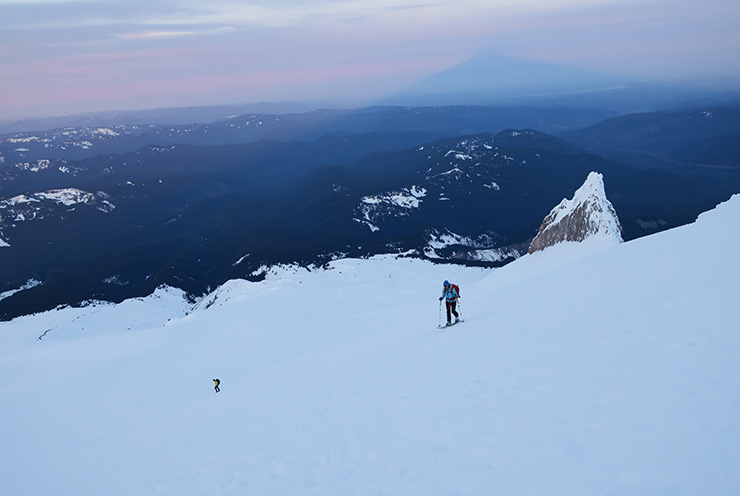
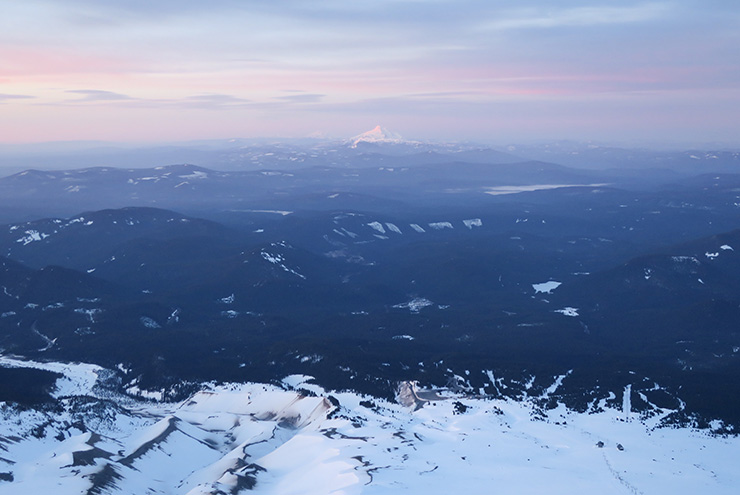
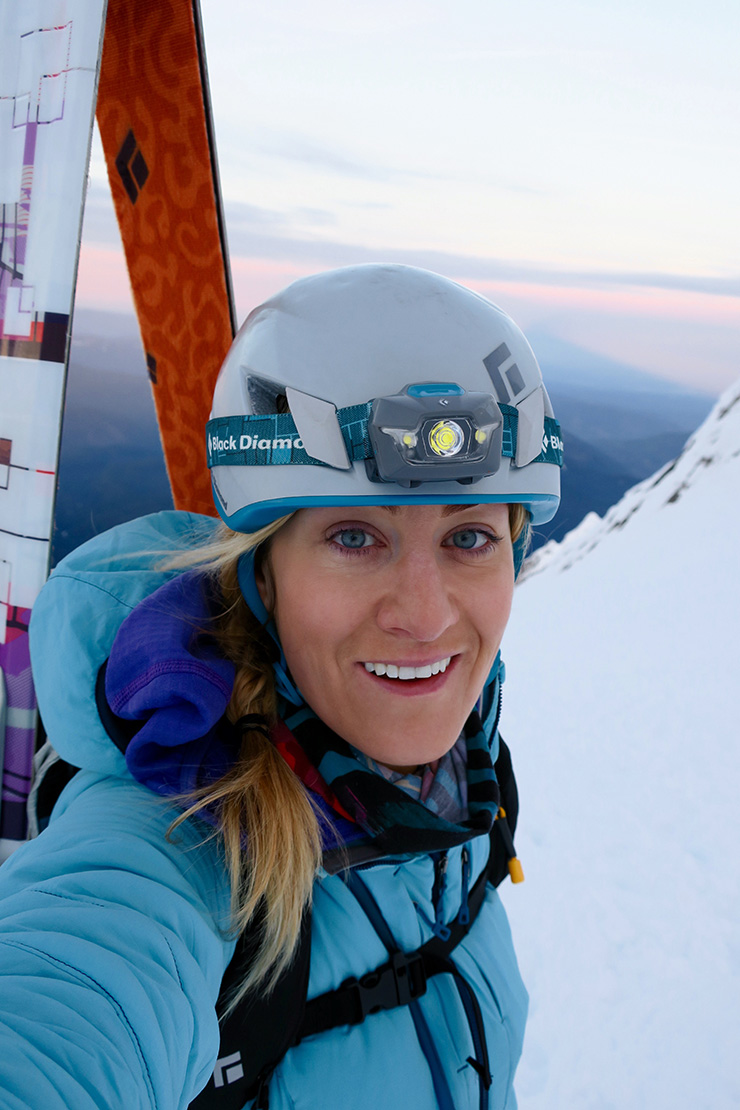
Climbing Mt. Hood
We left Timberline Lodge around 3:00 a.m. in the pitch black after parking there the night prior and sleeping in the back of our Subaru. Timberline Ski Resort grooms a climber’s trail just right of the Palmer Snowfield.
This groomed path takes you to the top of the Palmer Lift. The groomed trail is a long, uninteresting snow slog but easy to navigate in the night.
Once at the top of Palmer Snowfield, we put on our crampons and helmets, preparing to climb up Triangle Moraine.
Need some new mountaineering gear? Check out REI’s large selection of mountaineering gear, including ice axes, crampons, and more.
Since I didn’t have ski crampons (I highly recommend ski crampons for this route if you’re ski mountaineering), I had to boot pack from here. The rest of our group (my husband, Brian, and friend, Sara) were able to skin up to Hogsback successfully with their ski crampons.
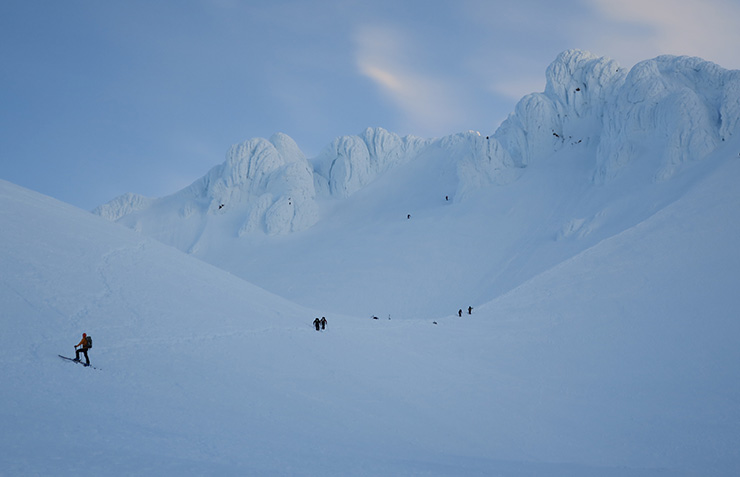
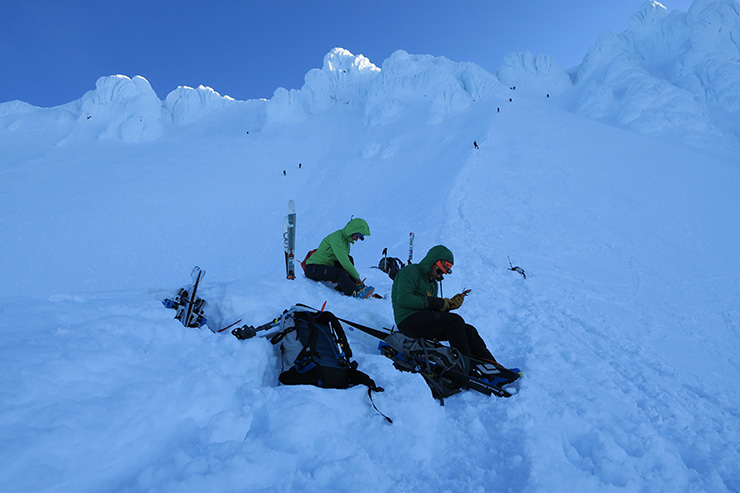
It started to get light as we approached Crater Rock. By the time we reached the Hogsback, climbing parties were already starting to descend from the summit. Sara and I left our skis at the Hogsback planning to ski the remainder of the way back. My husband, Brian, packed his skis to the summit, planning to ski the Old Chute down.
The Hogsback is a prominent feature for climbing Mt. Hood and a good place to rest before finishing the more challenging and dangerous sections of the climb.
If you climb Mt. Hood, check out the Mt. Hood Climber’s Guide for detailed route information.
The Hogsback was a fairly mellow staircase up to the Pearly Gates. During our climb, the Bergschrund was completely filled in, lowering the risk of this route significantly. Typically, the Bergschrund is a large crevasse in the middle of the Hogsback that climbers must navigate around and avoid falling into.
Once reaching the Pearly Gates, Sara and I decided to go left side, which was the more common route that day based upon the climber’s tracks. Brian went to the right side, which was steeper and less traveled.
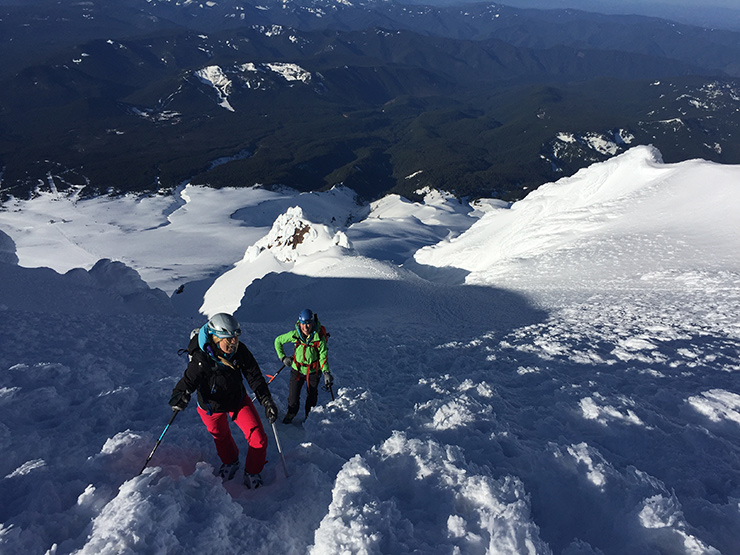
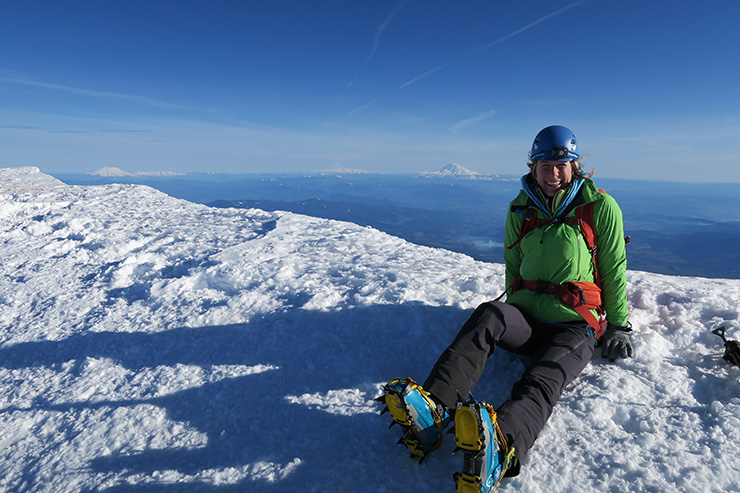
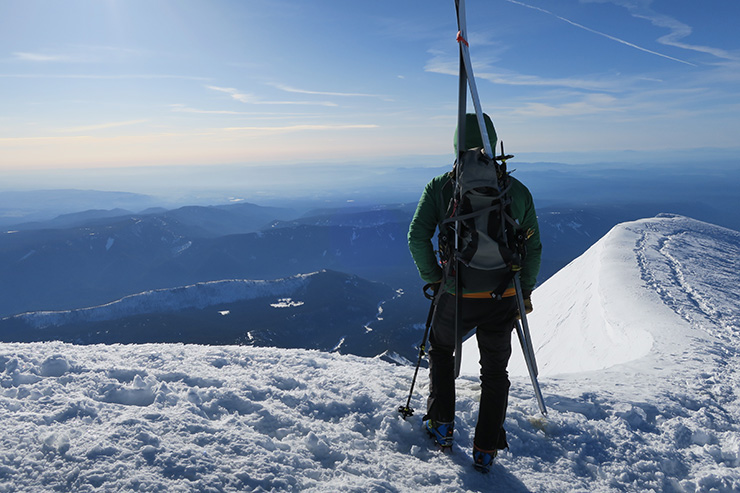
There was some loose ice fall climbing through the Pearly Gates, but nothing significant. Once topping out of the Pearly Gates, we continued the mellow hike to the summit.
After soaking in the summit views, we down climbed the Pearly Gates and back to the Hogsback. Once at the Hogsback, we put our skis on and skied the rest of the way down (except my husband, who skied from the summit).
Snow conditions were fairly icy around Crater Rock and on Triangle Moraine but softened up the lower we skied and the runs throughout Timberline Ski Resort were smooth.
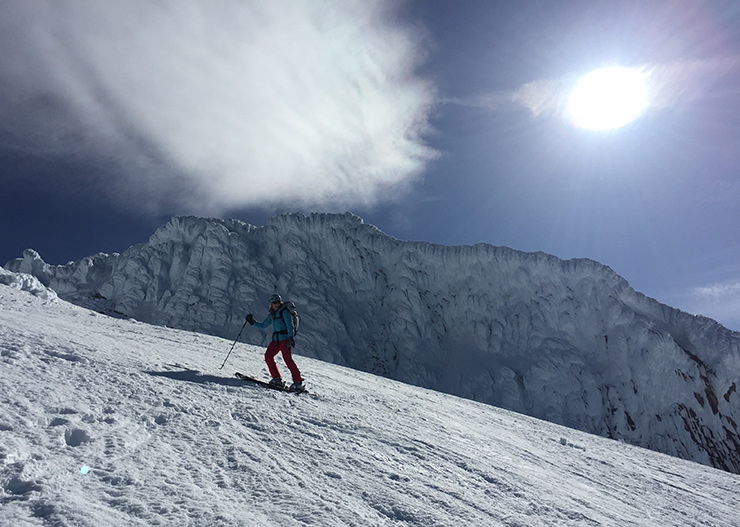
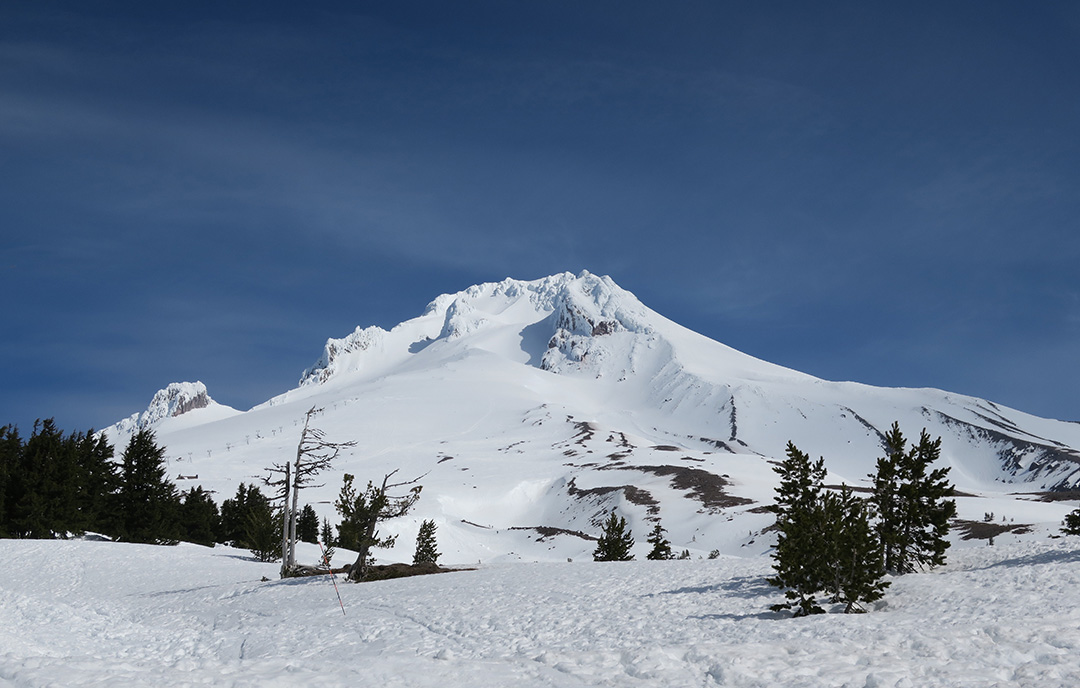
If you climb Mt. Hood…
Here are detailed reports of snow conditions and weather trends:
What are the best times to climb Mt. Hood?
The best time for climbing Mt. Hood is winter to early summer. The timing may depend on snow and route conditions (earlier in the winter presents avalanche danger, but ice or rockfall later in the spring can be dangerous).
Need some new mountaineering gear? Check out REI’s large selection of mountaineering gear, including ice axes, crampons, and more.
How do I get a climbing permit for Mt. Hood?
Wilderness permits are required for climbing to the summit and are self-issued in the “Climbers Cave” at Timberline Lodge. Climber registration forms are also accessible here and it’s recommended to complete climber registration to document your climb.
Sno-park permits are required for parking at the Timberline Lodge November 1-April 30.
Here are additional resources and trip reports if you plan to climb Mt. Hood:
Have you climbed Mt. Hood before or preparing to climb it for the first time? Respond in the comments below!
Updated: January 1, 2021
This post may contain affiliate links to brands we trust. If you use these links to purchase something we may earn a small commission. Thank you for your support!


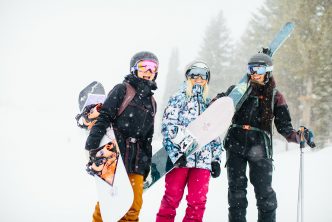
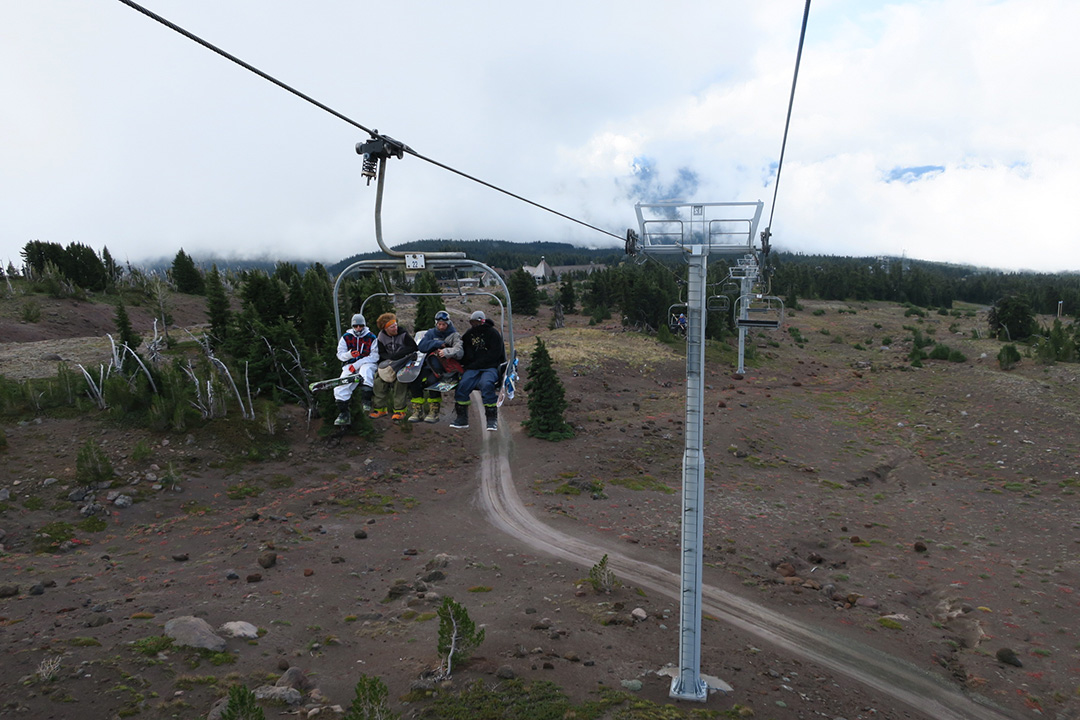
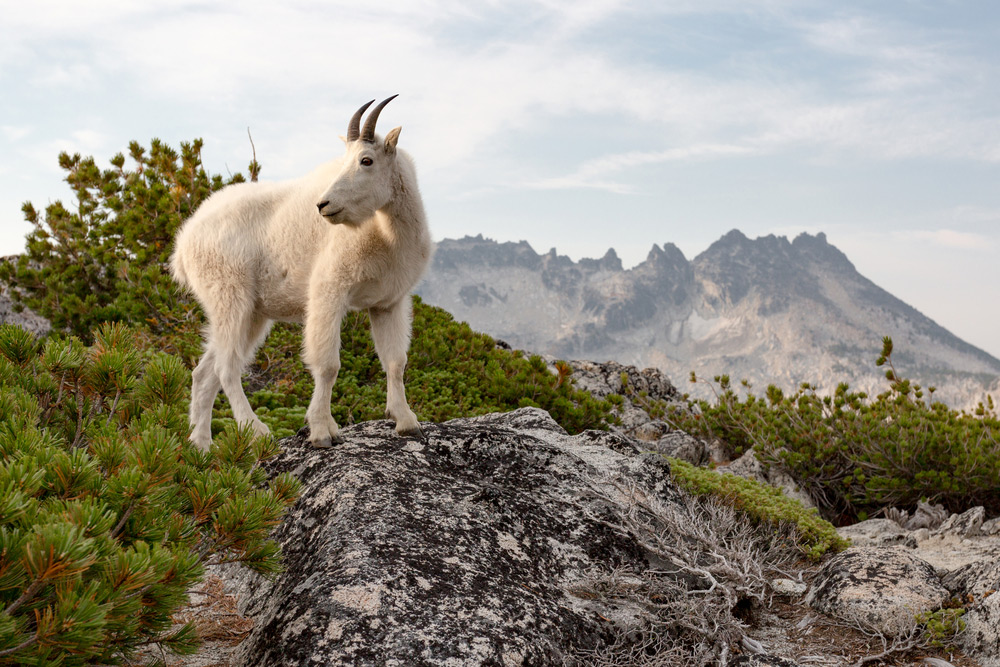
[…] Ski descent (partial) of Mt. Hood […]
[…] was very cloudy when we went for Labor Day weekend, but when the blue skies came out, the views of Mt. Hood summit area were […]
I have been surfing online more than 3 hours today, yet I never found any interesting article like yours. It is pretty worth enough for me. In my opinion, if all webmasters and bloggers made good content as you did, the web will be much more useful than ever before.
I simply want to say I’m beginner to weblog and seriously enjoyed your web blog. Probably I’m likely to bookmark your blog post . You definitely come with exceptional well written articles. Bless you for revealing your blog.